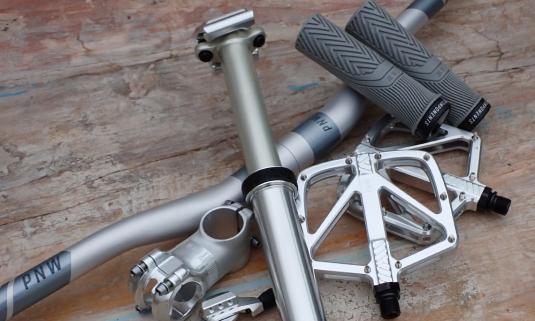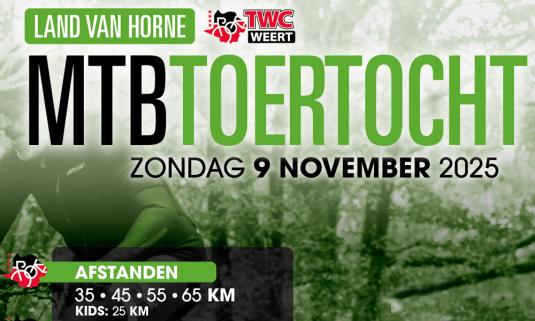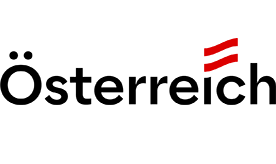By Mark Minick: “Cerevza, por favor!”; I figured being able to order a beer in Spanish was all that I needed. At th Georgia Bikefest In Metter, Gloria Colley had glowing descriptions of beautiful beaches, wonderful hotels, great riding, and adventures of the type you seldom get in biking, such as exploring pristine ecological wilderness areas and snorkeling in crystal waters. I thought “even if it couldn’t be as good as that, I could stand a week in the sun in January”; it was better than that.
www.ecotravelmexico.com
The brochure cautioned that “fat” tire bicycles were recommended, as some of the roads are unpaved. So I dusted off my old hybrid bicycle, and got it (and me) ready to fly off to Mexico. After significant contributions to the local bike shop and mail-order parts, the bike was ready. For my part, however, December turned out to be the coldest and wettest on record; there was no opportunity to “get in the miles”.
DAY ONE: THE ADVENTURE BEGINS:
Since I had not taken a bicycle on an airplane before, I wondered how much trouble packing the bike would be. I took off the pedals, and had every thing ready to go when I got to the Delta counter. The clerk said ”shipping a bicycle?” (can’t slip anything by those sharp-eyed Delta agents). He reappeared with a box the size of an expressway billboard; the bike dropped right in, without even taking off the wheels. I figured that the last I would see of it was it disappearing into the bowels of Hartsfield.
When I got to Mexico, the line for customs was very long, but went smoothly. On the other side of the checkpoint, there was my luggage and a huge box. In the Cancun airport, you get to play “customs roulette”; you push a bottom, and if it turns red they open all your luggage and search who knows what (wear clean underwear); I got the “green” light, and was waved through.
Once I trundled my luggage and this enormous box into the terminal, I was almost immediately met by someone wearing an RMBA (Riviera Maya Bike Adventure) tee shirt, and herded off to a waiting van. It was either a very efficient staff, or the best kidnaping scheme I’ve ever seen. Since most of the conversation was in Spanish, I wasn’t quite sure until they checked my name. With about 6 other souls with similar large boxes, we proceeded to drive through the countryside south of Cancun, a landscape which was mostly flat with scrubby low brush.
The other passengers turned out to include a writer for “Bicycling Magazine”. I knew this trip was a “first”, but it turned out to be a much bigger thing than I had expected. The State of Quintana Roo is supporting the development of tourism in the Mayan region and supported this trip in conjunction with an ecotourism entrepreneur and 15 other sponsors, including Dos Equis. Besides the writer for Bicycling, there was a writer for GORP.com, and a Mexican news crew filming us, and the two lovely young women they had with them for photographic background during the next week.
After about an hour, we drove through the outskirts of what I took to be small Mexican town (an impression which would be revised during the week, when we ended up in really small Mexican towns), Playa Del Carmen. The town had a somewhat disheveled and ramshackle “damn the building codes” look as we drove through it, but, what the heck, it was supposed to be an adventure, right? However, when we finally arrived, I checked into an open air, thatched roof building at a small hotel complex. The hotel consisted mostly of small “cottages, each of which had two hammocks on a front porch, and a nice bedroom with a ceiling fan and a steeply pitched thatched roof, the inside of which looked like a palm leaf turret. The bathroom was almost completely tiled. The overall effect was beautiful, and seemed right in place with the white sand and palms trees that covered the hotel site. The beach, which was right outside the door, rivals any beach I have seen in the world, including all over the Carribean and Australia; white sand, crystal blue water, palm trees and topless sunbathers (some even women). All it took was a “cerveza” from the nearby thatched roof bar to be “as good as it gets”.
In the evening, we all finally met the rest of the “adventurerers”; we were met at the restaurant building in the hotel by a waiter serving tequila shooters to everyone. Dinner was a wonderful buffet of Mexican specialties. Afterwards, we all convened in the bar, and finally met Kenneth Johnson, the ride director, and his staff which included 6 eco-tourism students. The ride director, Kenneth Johnson, a tall, good-looking bearded Mexican of about 30-35, is a Marine Biologist with EcoColors Tourism in Cancun. As we were to learn during the week, he is a man of tireless energy and consistent good humor. It was impossible not to be excited by his enthusiasm for his country and it’s people, or not to be intrigued by his knowledge of the history and ecology of the region. Besides the customary tee shirt, we were given hats, bandanas, maps, luggage tags, and arm bands, and our marching orders; be out front, with tagged luggage and bicycles, in the morning after an early breakfast. About ½ of the group was renting local mountain bicycles (Mexican Huffies), built more for strength than speed.
DAY TWO; BOUNCING, REPELLING, ZIPPING ALONG
At the appointed time, we all herded into a bus, while our bikes were trucked away to be met in the town of Nuevo Xcan, about a two hour trip. At one point, the bus turned off the only paved road in sight to take a “short cut” down a dirt road I would not have tried to drive a goat down. The fact that we made it at all was a tribute to the driver’s skill and complete lack of fear.
Once off the bus, we were met by a group of shy, polite, but curious local school children. We must have presented a pretty curious sight, with what, by local standards, were pretty exotic bicycles, and bicycle clothing which no one with any fashion sense would normally wear in public. The local bicycles bore a resemblance to trucks, both in construction and usage. I’m sure they must have been wondering what this crazy group of foreigners was doing getting off a perfectly good bus to bicycle instead. While I couldn’t catch much of the conversation, I’m sure I heard the phrase “gringos locos”; (maybe next year’s team jersey should read “Los Gringos Locos”).
We were directed down a paved road, and told to turn when we saw a sign with a green arrow. The next 20-25 miles were mostly flat, lightly traveled good pavement, with shoulder-high yellow wild flowers intertwined with purple morning glories lining the road. This was interrupted occasionally by small thatched roof houses. The area is mostly limestone, with almost no surface water. This makes the area stony and hard to farm. When we came to the green arrow, we turned down what could only be called a road because there was no large vegetation in the center of the rutted, gullied, wash-boarded and pot-holed gravel path we found ourselves riding on. I found out why a fat tired bike was required. After four miles of this, during which I may have developed a permanent stutter, we came to a small Mayan village, Pac Chen, in the jungle. There was a small group of thatched roof buildings built around a beautiful lake. There ,we were treated to grilled chicken, a bean dish, fruit juices and bottled water (which was all we used for drinking and even brushing teeth during the trip), and fried bananas. As we divided up into small groups, we were led by a guide for hike into the jungle. The guide explained about the local customs and vegetation, including a tree which is poisonous, and can only be treated by the bark of another tree which tends to grow in proximity. We also saw Chicole trees, which yield the base for chewing gum, and “tourist” trees, so-called because they are red and pealing. We eventually came to a wooden scaffold erected above a 10 foot hole in the ground. A glance down showed nothing but darkness. We were told we would repel down the rope to the cenote 70 feet below (say, what?)
This part of Mexico was originally under the ocean; just under the surface is a limestone foundation of fossilized coral and ocean floor. All of the water in the area sinks into the porous limestone, so there are no surface rivers. In places, the limestone collapses, leaving a “sinkhole” which fills with clear water, known as a “cenote”.
In this case, the hole opened up below ground to a large underground lake. Most of us donned harnesses, and got a 1 minute crash course (probably not the best term) in repelling down a rope, a process which involves leaning back, letting go, and slowing your descent with a hand on the rope behind your back. We were cautioned not to let go of the rope; there was no safety line, and we would descend at an uncontrolled pace if we let go ( reassuring thought). Linda, the mountain-climbing triathelete of our group practically leapt (in a manner of speaking) at the chance to go first; it seemed like the only gentlemanly thing to do (whew!). After she survived and declared it in an echoing voice to be “GREAT”, there was nothing to do but follow.
Once the initial “Oh, Sh*t!” feeling passed, the decent was exhilarating. We were met at the end of the rope by one of the guides with an inner tube. The light coming in from two openings to the surface was just enough to give a cathedral-like illumination to the water-filled cavern we found ourselves in. It seemed to be about 150 yards (or meters, if you are so inclined) across, and the water was just cool enough to be pleasant after the hike in the jungle. After floating about, and disturbing a few bats, it was time to leave. This involved a 70 foot climb up a rope ladder; actually more of a challenge than coming down. We did have a safety line for the ascent, and the guides would haul you up using a block and tackle attached to your harness, but after Linda climbed up, this was not a suitably macho alternative.
Once back to the surface, we were told to keep our harnesses on. We trekked a further distance in the jungle, and came to an 80 ft. cliff over a lagoon, where a steel cable had been strung from above the cliff to a dock on the other side. The guide demonstrated how to clip the harness into a pulley assembly, and jump off the cliff (no kidding!) and “zip” down the wire at uncontrolled high speed until slowed at the other end by a bungee cord also attached to the harness. The ride was a real thrill, once you got over the first step.
Those of us who survived the jungle tests got back on our bikes to retrace the dreaded dirt “road”. Shortly after regaining the pavement, there was an opportunity to take a side trip to see a spider monkey preserve, which was reported to be interesting. The afternoon was waning rapidly, however, and my companion and I decided to press on to the next hotel, 15 miles away. The sun was setting between 5:00 pm and 5:30 pm, so there was not much time to spare. The monkey watchers arrived after dark, which is very dark in rural Mexico.
The next town was Coba (“Waters Stirred by the Wind”). As we rode through, it seemed like an unpromising place to stay. There was little of what an American would recognize as “civilization”; no stores, gas stations, etc. Only groups of small buildings constructed in an eclectic style which owed more to expediency than planning. Some small hand-lettered signs seemed to indicate a place for groceries, or similar small businesses. Much to our surprise, however, our last turn down a short stretch of dirt road revealed a wonderful hotel, Villas Arqueologicas, operated by Club Med. The hotel has a vaguely Spanish feel to it, with stucco walls and interior central courtyards. Our luggage was placed in front of the rooms to which we had been assigned.
DAY THREE: BIRDS, CROCODILES, MAYAN RUINS AND CULTURE:
Kenneth had announced the day before that he would lead a bird-watching session very early in the morning: 6:00am. As we walked (or stumbled without the benefit of morning coffee) around the lagoon, he mentioned that many migratory birds from the U.S. come here in the winter. He pointed out species like “social flycatchers”, and other birds I had seldom encountered. He also pointed out the eyes of crocodiles in the lagoon, although “ they seldom bother adults” (not much comfort, since it is an appellation to which I have forgone my aspiration, even at 50).
After breakfast, we divided into groups going different directions. With about 1/3 of the group, I walked to ruins at Coba, no more than ½ mile away. This site is one of the largest groups of Mayan ruins, covering more than 44 square miles. The ruins date to about 600-900 AD, and once had 50,000 inhabitants.. Much of the site has yet to be excavated, resulting in an “Indiana Jones” feel to the tour. Among the ruins is the highest pyramid in the Yucatan. From the top at 138 feet, you can see miles of surrounding jungle, and forested hills where excavation has not been done.
Afterwards, we biked 6 miles down (another!) dirt road, although this one resembled a “real” road, to the village of San Juan. In a hike through the jungle, the people of the village acted out scenes from Mayan culture, such as gathering Chicole, and resolving a social dispute, at various spots along the way. At the end, we were offered a lunch at a jungle shelter which included chicken wrapped in banana leaves and baked on an open fire. It was the best chicken I have ever eaten!. The accompanying salsa, made with habanero peppers, could quickly get your attention. We had an opportunity to purchase locally made handicrafts, including elaborately embroidered cloth. While somewhat shy, and speaking only Mayan, the people were friendly, and plainly proud of their culture. We were told that we were the first group of tourists for whom this “play” had been done.
We returned to Cerevza, by the pool, and a wonderful dinner.
DAY FOUR: GRAN CENOTE AND TULUM:
The next day we set off under conditions that make you remember why you bike: 65 degrees, sunny, mostly flat roads with good pavement, little traffic, and a profusion of wild flowers along the road. The morning ride was as close to prefect riding conditions as you could wish.
About 35 miles down the road, we arrived at the Gran Cenote.. This site, right on the road, is a large limestone hole with crystal clear waters, renowned for snorkeling and scuba diving. After a climb down some stairs to a platform which would not have met OSHA standards, we had snorkeling gear waiting for us. The water was pleasantly cool after the ride, and full of fish. The cenote wandered around, with opportunities to explore cave formations both above and below the water.
After leaving the Gran Cenote, we soon arrived at the town of Tulum, known for the Mayan site. A group of us found a great local restaurant for lunch, and we proceeded to our hotel. The hotel was yet another beautiful site by the sea, with the beach right over the hammocks on the patio. Maybe you could get tired of white sand, palm trees and unbelievably blue water (or not!).
We then biked back up the coast to the famous ruins of Tulum. This much photographed walled site is the only Mayan site on the coast (beachfront property then not being what it is now). It is on a shear bluff over the ocean, and resembles a fortress, although we were told it was a center for learning, more like a university. Of course, our guide also told us that the ancient Maya had mastered telepathy and teleportation, so a rather large block of salt should be taken with this recital.
DAY FIVE: JUNGLES AND WETLANDS:
South of Tulum is a large ecological preserve called Sian Ka’an. We biked about 25 miles down the highway, to meet once again with our ubiquitous entourage; Kenneth Johnson’s assistants, water, drinks, snacks, and the two porta-pottys which followed us from rest stop to rest stop on a truck. I dreaded being smashed by an errant porta-potty which had broken loose on a dirt road; what an ignominious end!
We surrendered our bikes, and they were loaded on trucks to be taken to the other side of the preserve. We then hiked into the jungle. In this case, a considerably less “tame” version than our previous hikes. After exploring several Mayan ruins, including a particularly nice temple, we were wandering down a jungle trail when many of us learned the “Mayan ant dance”; we encountered some small ants of a ferocity and tenacity which South Georgia fire ants would envy. Since I was wearing sandals at the time, I quickly learned several new dance moves.
We eventually came to an expansive fresh water lagoon, at least a mile across, fed entirely by underground springs. Although the initial plan had been to kayak across the lagoon, the logistics proved too difficult with the time constraints and the number of people. We boarded 15 ft. whaler-type boats with outboard motors. Each boat had a biologist or ecologist to help explain the ecosystem. Once across the lagoon, we entered a channel barely wider than the boat, and proceeded until we came to a Mayan temple on an island. There, Kenneth said “OK, time to go for a swim”. We all piled out of the boats clutching the seat cushions to use as life preservers. It turned out the current was so swift, it moved us right along. As was true almost everywhere, the water was so clear you could see the bottom, and we all floated along while Kenneth named the flowers and plants, and pointed out holes in the bank where crocodiles “probably” lived (a comforting thought). After about a hour of swimming, we regained the boat and continued, accompanied by exotic birds such as roseate spoonbills.
At the other end of the channel, we came to a salt or brackish lagoon which connected to the sea, with a whole different ecosystem. Finally, we came to a beautiful inlet at the beach, where our bicycles waited. A ride of about 6 miles up the coast, past an armed military checkpoint, led us once again to our hotels, and magaritas and cerveza by the sea.
Dinner that night was in the restaurant of the adjacent hotel, with sand floors, a thatched roof, and exotic birds in cages.
DAY SIX: XEL-HA AND THE LONG UPWIND GRIND.
The next day, we checked out of the hotel and headed north along the Federal Highway; straight, mostly flat with traffic at very high speeds, although there was a generous shoulder. In short order, we arrived at Xel-Ha ("shell-ha”).
This site is a “developed” park, where a fresh water spring meets a salt water lagoon, resulting in a layer of fresh water on top of salt water. It is a natural aquarium of an unnatural cerulean blue, and great place to snorkel; fish of all kinds. The park has equipment rentals, lockers and showers, restaurants, gift shops, and great places just to sit in the sun. Although extremely nice, and very tastefully done, Xel-Ha was a change from the mostly undeveloped and undiscovered places we had been.
To begin our snorkeling trip, we elected to go up to the head of the spring and float down to the lagoon. While there was a tram to transport people, it was full. We were offered a 6 passenger, pedal-powered surrey-type cart if we wanted to use it. That was all it took for a group of bicyclists, and we crowded on the surrey, and set off. We pedaled with such enthusiasm that we overtook the tram. That was when we discovered that no one knew where the brakes were. After a near miss, and a brief episode where the strap of a life jacket got entangled in the axle, almost chocking one of the women, we arrived safe, if not entirely sound.
We floated down the fresh water river along mangrove covered banks. The layers of water of different densities created a diffraction effect which was a little disconcerting at first. We eventually came to the limestone lagoon, which teems with tropical fish. There was a constant “clicking” sound in the water, explained as the large, brightly colored parrot fish, which chew up rock and coral, and excrete sand.
After a lunch and cerveza, several of us stopped for “tattoos” of black henna before resuming the ride.
The rest of the ride was a long ride against a head wind, perhaps the only really tiring day of riding on the trip. The route back to our original hotel in Playa Del Carmen took us by a gelatte shop (Italian ice cream), as good as any I’ve had, and a welcome relief from the day’s heat. We ended up at the same hotel and beautiful beach where we had begun the trip.
DAY SEVEN: XCARET:
On our final full day, we took a bus to near-by Xcaret (“ish-car-et”), a tremendous natural preserve and park, which, while developed, avoids feeling overdeveloped or commercialized. The site was one of the most important Mayan ceremonial centers and seaports. There is so much to see and do that one day was hardly adequate; miles of trails with “natural" landscaping, an aviary, a butterfly area, native animal preserves, turtle breeding areas, an underground river for snorkeling, limestone pools and ocean inlets with great sun-bathing and snorkeling. Large, thatched roof restaurants provided refreshments.
In the evening, the miles of paths in the preserve are lit by “lumenaria”, candles in paper bags. We attended a demonstration in a re-created stadium of the ancient Mayan ball game, played by bouncing a ball from hips and torso; no hands or feet allowed. The object was to pass the ball through a stone hoop on either side of the field. Traditionally, the winners were sacrificed to the gods as an honor; seems like it would be hard to build much of team that way.
Our tour continued through Xcaret, with Mayan dances and ceremonies staged at various places around the site, culminating in a presentation of songs and dances from all the Mexican provinces in the arena.
Since this was the official end of the tour, we were guests at a gourmet dinner in one of the large restaurants, hosted by the Quintana Roo tourism council. This included an open bar, shrimp and filets, and a pastry dessert topped with ice cream. After speeches and thanks all around, we were each presented with a color diploma.
The next day found most of us being ferried to the airport in small groups to return reluctantly to the “real” world.
I have been on many bike tours, but this trip was the best combination of good riding, beautiful scenery, fun, and adventure I’ve ever experienced. The trip was very well organized, with Kenneth making sure that everything went well. I think we were all impressed with how unfailingly hospitable and friendly the ordinary Mexican people we met were.
Will I be back next year? You bet!








